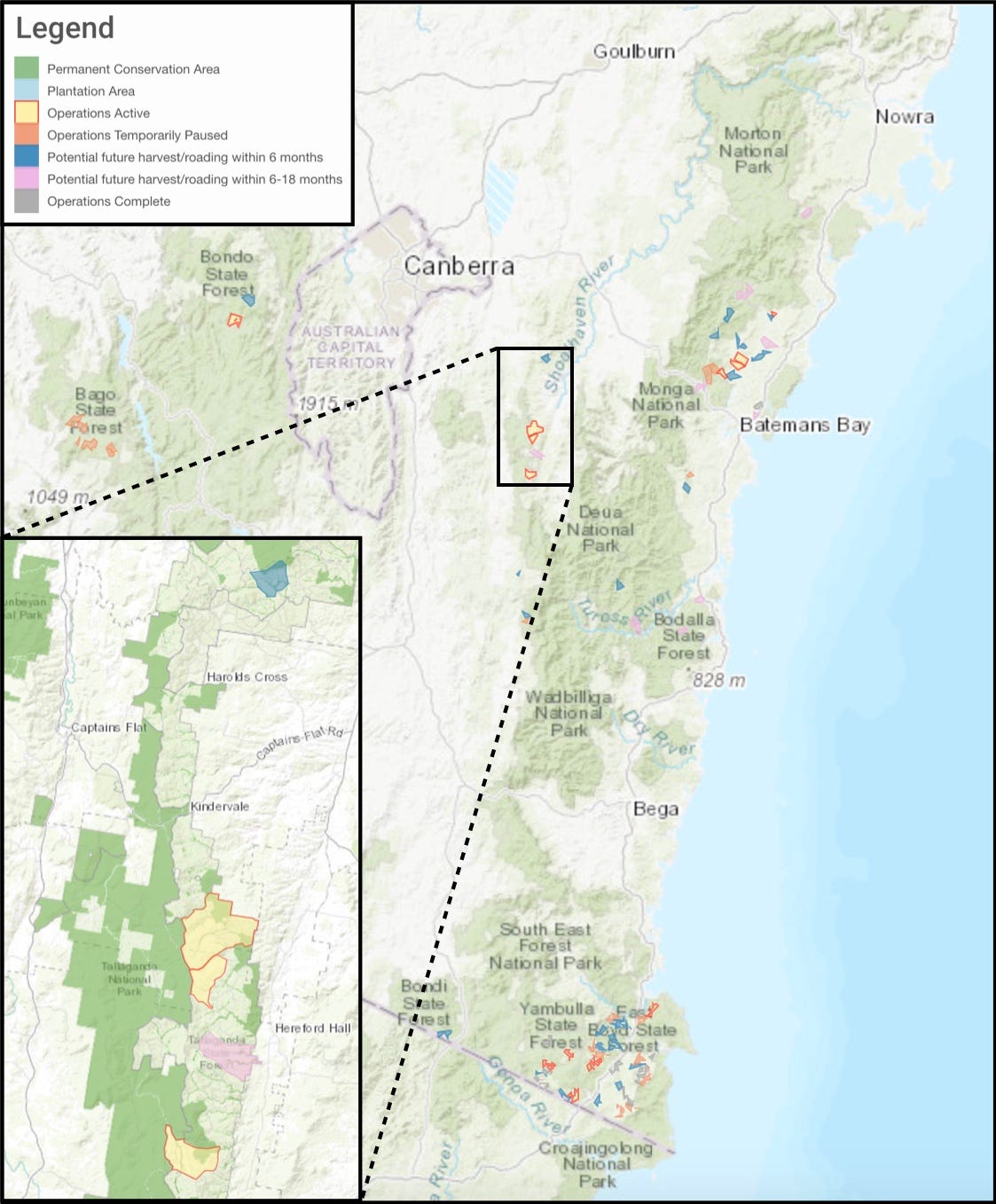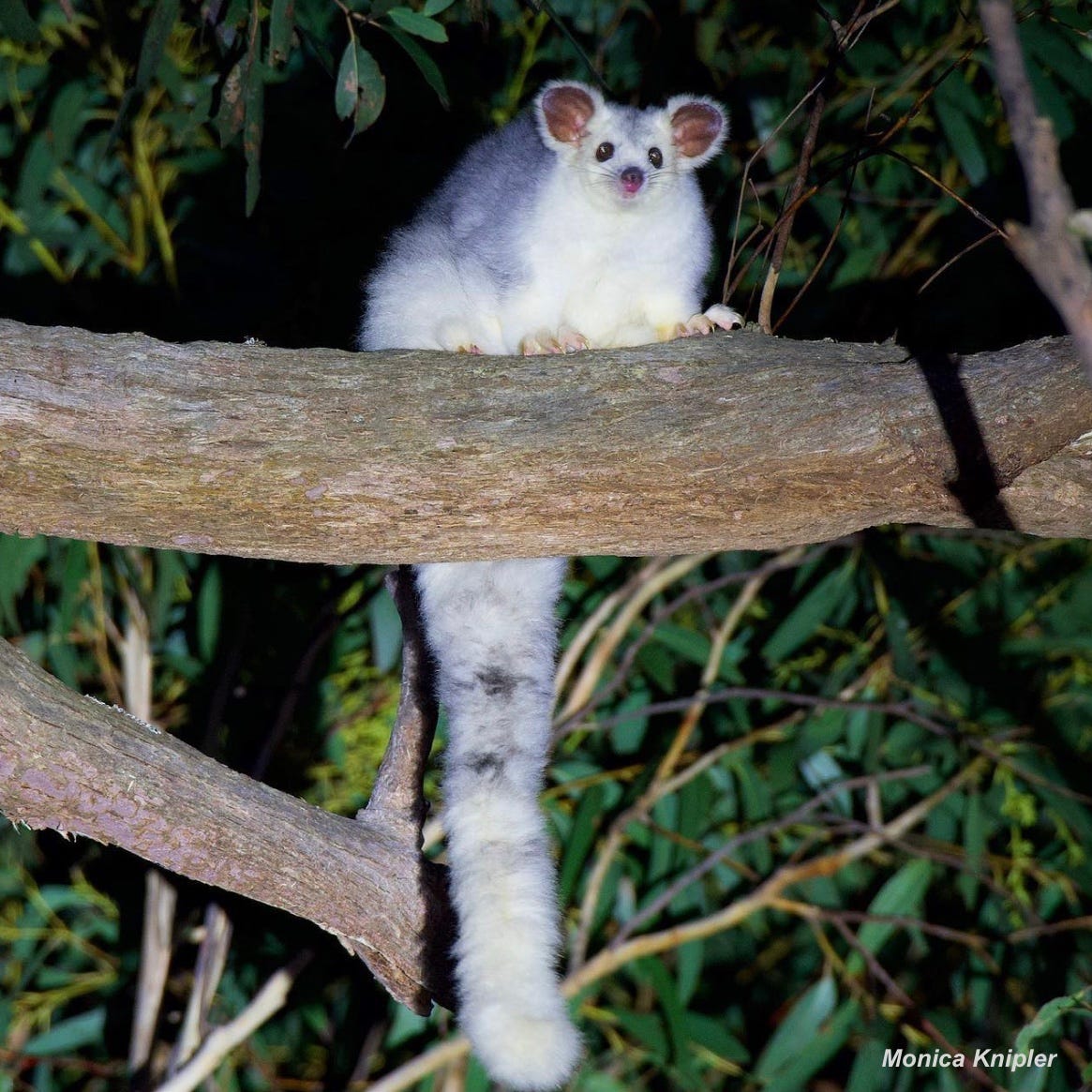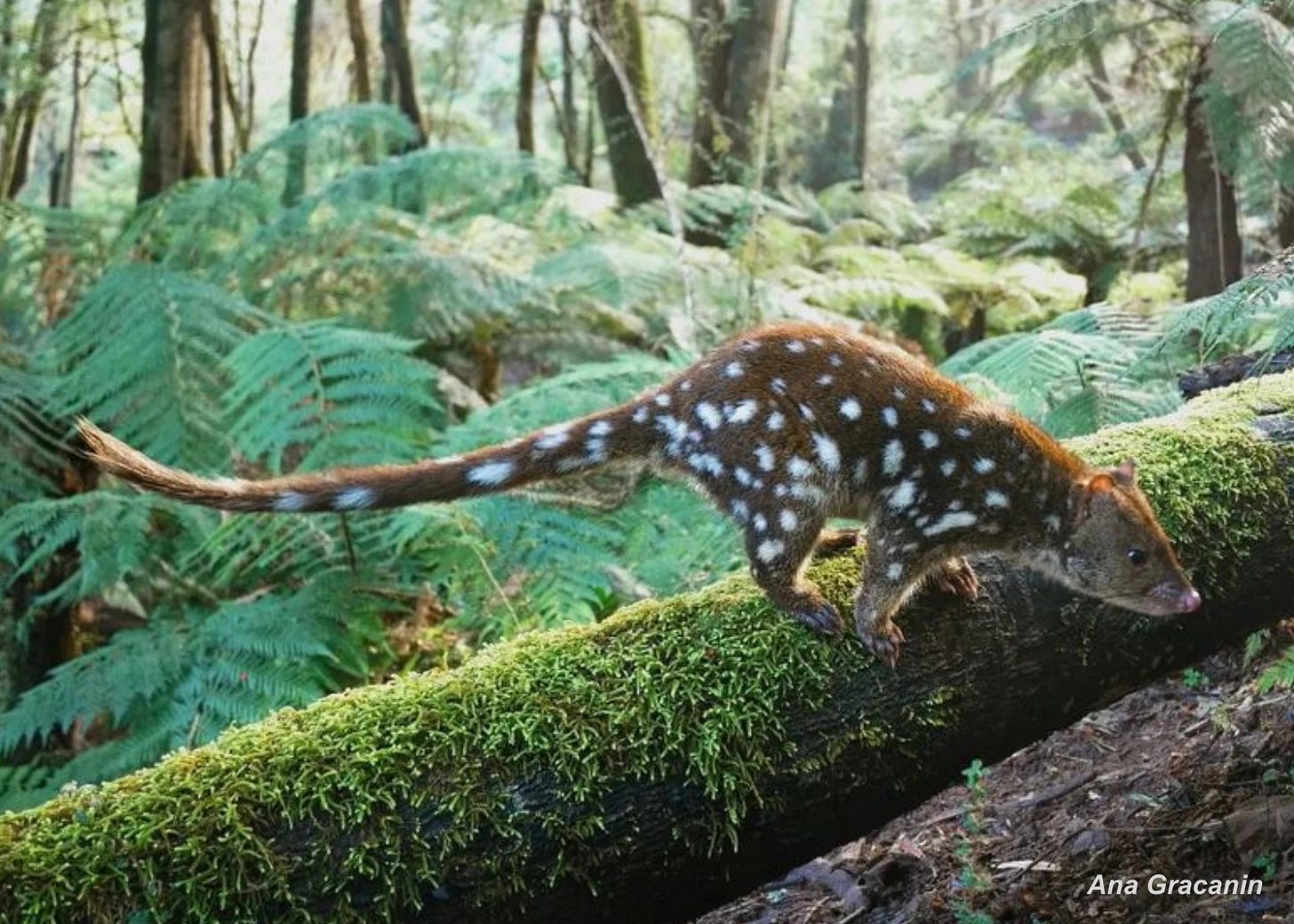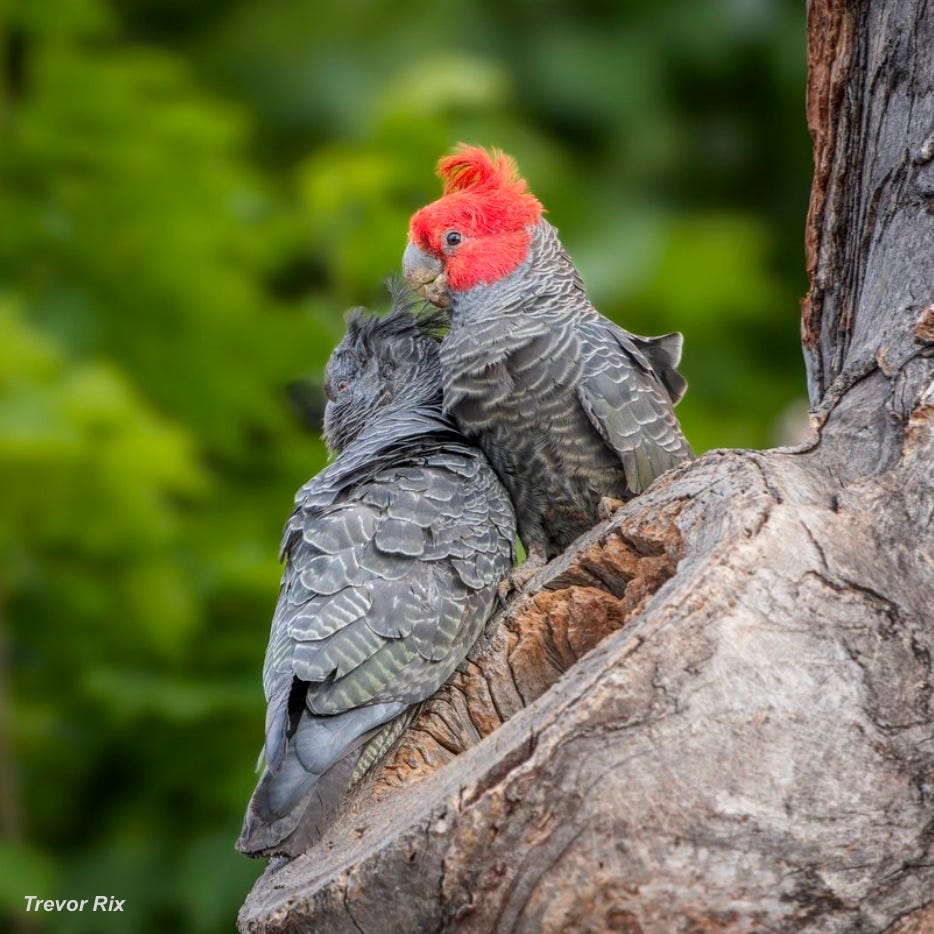Note: views expressed in this article are my own and do not represent the views of any organisation I’m connected to. I’ve put a lot of effort into ensuring the information is accurate and reliably-sourced, but these are complex topics and I’m learning as I go; constructive feedback and corrections are welcome.
If you’re new here…
This article continues on from Part 1.
To recap: I love nature and running—they’re a big part of my social life and essential for managing my mental health. Recently, I learned about the destructive logging happening in the beautiful forests of the Central Highlands of Victoria, near where I grew up, and wanted to do something to help. I realised combining running with environmental activism was a good fit for me and started this ‘Run for the Forests’ project.
Destructive activities tend to take place in regions we don’t explore—they’re out of sight and out of mind. So let’s bring them into sight. With friends I’ll seek out these places for runs and hikes, and we’ll share what we learn with the running community.
Where to focus?
At first, I felt overwhelmed by the number of environmental issues deserving attention. How do you choose the most impactful use of your time and energy? I reminded myself not to let indecision lead to inaction. The focus didn’t need to be on the best (or worst?) thing—I just needed to pick something and get started. Preferably something local.
According to the 2021 State of the Environment Report, the state of Australia’s native vegetation is ‘poor’ and ‘deteriorating’ due to land clearing and intensification of land use [1]. The main drivers of land clearing in Australia are agricultural expansion (primarily for cattle grazing), urban expansion, and mining [2, 3, 4], with the bulk of land clearing happening in Queensland [5].
Native forest logging is classed as ‘land use’ rather than ‘land clearing’ because new trees eventually grow to replace the cut trees. Having said that, a recent analysis by researchers at RMIT University found that 20% of the forest logged in Victoria failed to regenerate [6]. It also takes over 100 years for logged forests to be suitable again as habitat for species that rely on tree hollows for shelter [7].
In May 2023, the Victorian Government announced an end to native forest logging in Victoria by 2024 [8]. This decision was attributed to the mounting direct and indirect costs of legal cases, with grassroots environmental organisations alleging that VicForests had broken State and Federal conservation laws during logging operations [9, 10, 11, 12]. Native forest logging will also end by 2024 in Western Australia [13] and by 2026 in Queensland [14], but continues indefinitely in New South Wales (NSW) and Tasmania.
With help from friends, I decided to focus initially on native forest logging in South East NSW—specifically, in Tallaganda State Forest near my current hometown of Canberra. Logging isn’t the only threat to our native forests, but it seems like a practice that’s on its way out—we just need to keep up the public pressure.
Close to home
Native forest logging in NSW state forests is managed by the Forestry Corporation of NSW—a commercial entity owned by the NSW Government (similar to VicForests in Victoria and Sustainable Timber Tasmania in Tassie). Harvest plans are publicly available here for the coastal region and here for the western region of NSW. The Forestry Corporation’s website states that only 1% of state forests are harvested each year [15]. This sounds pretty good, until you realise it means 5% in 5 years, 10% in 10 years, and 50% in 50 years.
The map below shows planned and active logging operations near Canberra, as of early December 2023. There are clusters of operations in state forests near Batemans Bay and Eden, as well as in Bondo State Forest and Bago State Forest to the west of Canberra, and Tallaganda State Forest to the east. I’ve shown a zoomed-in version of the Tallaganda region on the map below, where there are currently three active and two planned logging compartments.

If you’re a Canberra-based runner, you might be familiar with Tallaganda from the Capital to Coast 100 km Stage Trail Race, which includes a stage in the northern section of Tallaganda National Park. Tallaganda forest extends approximately 65 km north-to-south and 10 km east-to-west. Approximately one-third of the forest is protected with national park status, and the remainder is managed as state forest with minimal protection. It’s home to several threatened (and extremely cute) species, including the Greater Glider, Spotted-tailed Quoll, and Gang-gang Cockatoo.



When I first started looking for information on Tallaganda earlier this year, there was very little available—it seemed like a forest without many friends. But that was about to change.
What’s next?
Thanks for taking the time to read this. Here’s what’s coming up in the next few blog posts:
Trip report from the recent Hillseekers x Run for the Forests Tallaganda run
What we’ve learned so far from hiking through logging compartments in Tallaganda State Forest
Overview of recent good news stories for Tallaganda
Interview with a conservation biologist who specialises in threatened mammal species, including the Greater Glider.
I’m also working toward a big Tallaganda run in May or June 2024—stay tuned!
If you’d like to hear more, please hit the subscribe button below to receive future posts via email. You can also follow along on Instagram and/or Facebook, which are currently more up to date than this blog. If you have a question or you’re interested in getting involved, feel free to reach out at runfortheforests@gmail.com.
References
[1] Williams KJ, Hunter B, Schmidt RK, Woodward E, Cresswell ID (2023) Land: Native vegetation. In: Australia State of the environment 2021. Australian Government Department of Agriculture, Water and the Environment, Canberra. Available at: https://soe.dcceew.gov.au/land/environment/native-vegetation (Accessed: 11 December 2023), DOI: 10.26194/6EAM-6G50.
[2] Australian Government Department of Climate Change, Energy, the Environment and Water (2023), National Inventory Report Volume I. Available at: https://www.dcceew.gov.au/climate-change/publications/national-inventory-report-2021 (Accessed: 11 December 2023).
[3] Australian Government Department of Climate Change and Energy Efficiency (2011) Drivers of land clearing in Australia. Available at: https://www.dcceew.gov.au/sites/default/files/documents/nga-drivers-of-land-clearing-in-australia.pdf (Accessed: 11 December 2023).
[4] Wilderness Society (2023) Deforestation and land clearing in Queensland. Available at: https://www.wilderness.org.au/protecting-nature/deforestation/qlddeforestation (Accessed: 11 December 2023).
[5] Kilvert, N. (2020) ‘Land clearing in Australia: How does your state (or territory) compare?’, ABC Science, 17 December. Available at: https://www.abc.net.au/news/science/2020-10-08/deforestation-land-clearing-australia-state-by-state/12535438 (Accessed: 11 December 2023).
[6] Slezak, M., Doman, M., Shatoba, K., & Palmer, A. (2023) ‘A legacy of logging’, ABC News, 1 December. Available at: https://www.abc.net.au/news/2023-12-01/ai-analysis-finds-failed-forest-regrowth-after-logging-/103153614 (Accessed: 11 December 2023).
[7] NSW Parks & Wildlife Service (1999) Conservation management note 5: Natural tree hollows. Available at: https://www.environment.nsw.gov.au/resources/nature/Factsheet5Treehollows.pdf (Accessed: 11 December 2023).
[8] Moreton, A., Ore, A., & Karp, P. (2023) ‘End of native logging in Victoria ‘a monumental win for forests’, say conservationists’, The Guardian, 23 May. Available at: https://www.theguardian.com/australia-news/2023/may/23/end-of-native-logging-in-victoria-a-monumental-win-for-forests-say-conservationists (Accessed: 11 December 2023).
[9] Readfearn, G. (2022) ‘Victorian state logging company failed to protect threatened gliders, court finds’, The Guardian, 4 November. Available at: https://www.theguardian.com/environment/2022/nov/04/victorian-state-logging-company-failed-to-protect-threatened-gliders-court-finds (Accessed: 11 December 2023).
[10] Slezak, M. (2021) ‘Federal Court finds in favour of VicForests in battle over destruction of Leadbeater's possum habitat’, ABC News, 10 May. Available at: https://www.abc.net.au/news/2021-05-10/possums-logging-appeal-win-for-vicforests/100128352 (Accessed: 11 December 2023).
[11] Mayers, L. (2022) ‘Trial begins for VicForests accused of unlawful logging activity threatening wildlife’, ABC News, 7 March. Available at: https://www.abc.net.au/news/2022-03-07/vicforests-fronts-court-accused-of-unlawful-logging/100888246 (Accessed: 11 December 2023).
[12] VicForests (2022) VicForests Annual Report 2021–22, Melbourne: VicForests. Available at: https://www.vicforests.com.au/static/uploads/files/vf-annual-report-2022-final-201222-wfjdjhwlojpk.pdf.
[13] Moreton, A. (2021) ‘Western Australia to ban native forest logging from 2024 in move that blindsides industry’, The Guardian, 8 September. Available at: https://www.theguardian.com/australia-news/2021/sep/08/western-australia-to-ban-native-forest-logging-from-2024-in-move-that-blindsides-industry (Accessed: 11 December 2023).
[14] Queensland Government Department of Agriculture and Fisheries (2023) Native timber action plan: state-owned native timber. Available at: https://www.daf.qld.gov.au/business-priorities/forestry/native-timber-action-plan/state-owned-native-timber#:~:text=Regional%20Plan%20area%3F-,State%2Downed%20native%20timber%20production%20will%20end%20in%20the%20SEQ,still%20remains%20an%20important%20priority (Accessed: 11 December 2023).
[15] Forestry Corporation of NSW (2023) Native forestry operations in NSW. Available at: forestrycorporation.com.au/operations/about-our-harvesting-operations/native-forestry (Accessed: 11 December 2023).
[16] Reid, S. (2021) ‘Australia’s charismatic glider marsupial’, BBC Travel, 19 February. Available at: https://www.bbc.com/travel/article/20210217-australias-charismatic-glider-marsupial (Accessed: 11 December 2023).
[17] Australian Government Department of the Environment (2023) In: Species Profile and Threats Database, Department of the Environment, Canberra. Available at: https://www.environment.gov.au/sprat (Accessed: 11 December 2023).
[18] NSW Government Department of Planning, Industry, and Environment (2020) Saving our species: Spotted-tailed Quoll. Available at: https://www.environment.nsw.gov.au/-/media/OEH/Corporate-Site/Documents/Animals-and-plants/Threatened-species/saving-our-species-spotted-tailed-quoll-fact-sheet-200434.pdf (Accessed: 11 December 2023).
[19] Birdlife Australia (2017) Bird profiles: Gang-gang Cockatoo. Available at: https://birdlife.org.au/bird-profiles/gang-gang-cockatoo/ (Accessed 11 December 2023).




“I reminded myself not to let indecision lead to inaction.” - 100%